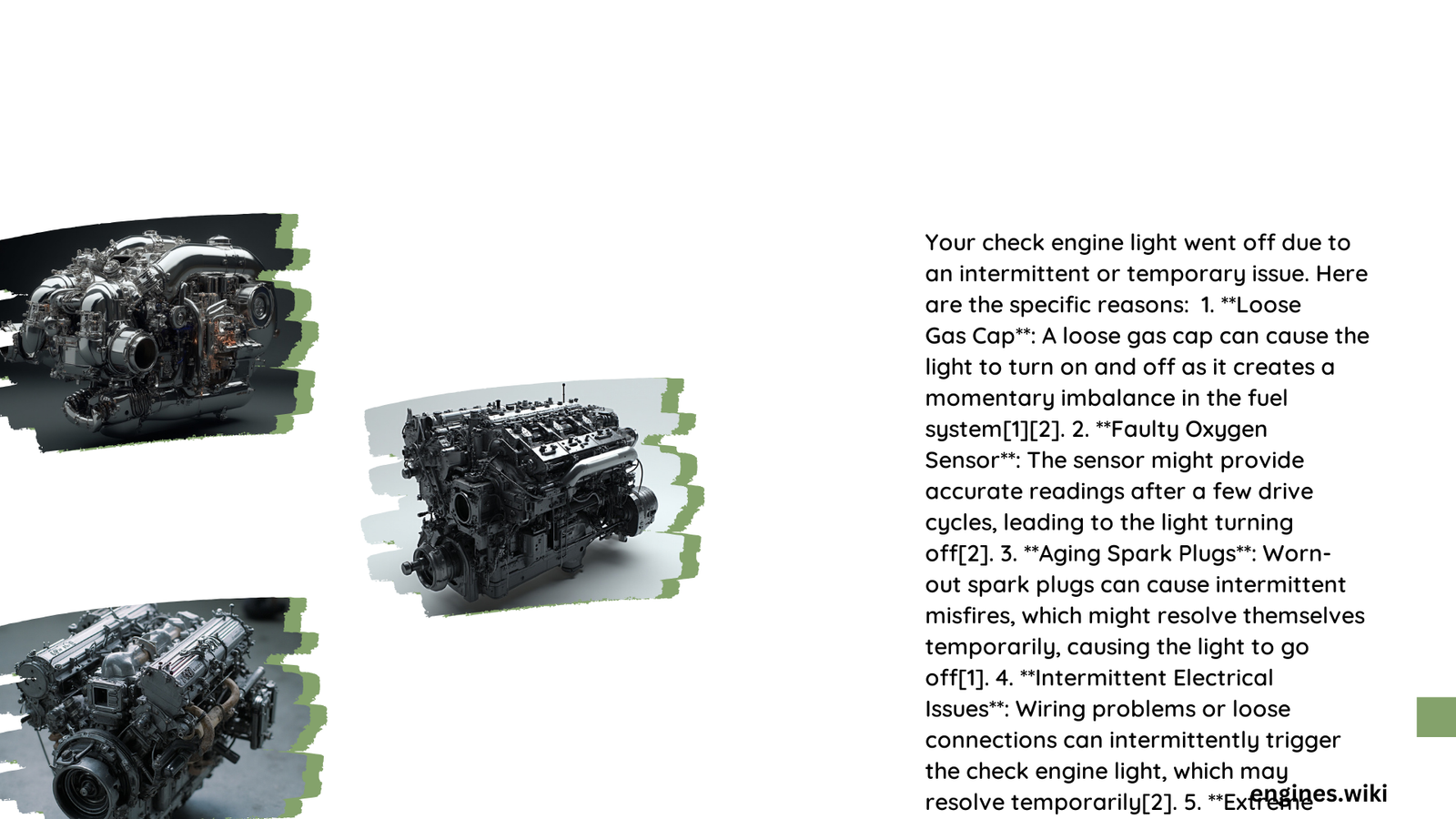When your check engine light mysteriously goes off, it could signal multiple underlying scenarios ranging from minor sensor glitches to resolved mechanical issues. Modern vehicle onboard diagnostic systems continuously monitor engine performance, generating specific trouble codes that trigger warning lights. Understanding these codes and their resolution can help you comprehend why your check engine light suddenly disappeared, potentially saving you expensive repair costs and preventing future mechanical complications.
What Causes Check Engine Light to Turn Off?
Can Diagnostic Trouble Codes Explain the Light Disappearance?
Diagnostic Trouble Codes (DTCs) play a crucial role in understanding why your check engine light went off. These alphanumeric codes provide specific insights into potential vehicle system malfunctions:
| Code Type | Meaning | Potential Resolution |
|---|---|---|
| P0171 | System Too Lean | Fuel system inspection |
| P0300 | Random/Multiple Cylinder Misfire | Spark plug replacement |
| P0455 | Evaporative Emission System Leak | Gas cap tightening |
What Triggers Automatic Check Engine Light Reset?
Several scenarios can cause your check engine light to automatically turn off:
- Temporary Sensor Malfunction
- Intermittent electrical issues
- Momentary sensor voltage fluctuations
-
Environmental temperature variations
-
Self-Diagnostic System Correction
- Vehicle’s computer recognizes transient problem
-
System performs automatic reset after multiple successful operation cycles
-
Minor Mechanical Adjustments
- Loose connections resolving themselves
- Small mechanical tolerances realigning
How Do Drive Cycles Impact Check Engine Light?
Drive cycles significantly influence check engine light behavior:
- Complete Drive Cycle Requirements
- Cold engine start
- Idle period
- Acceleration phases
- Steady highway speed
- Deceleration
What Are Professional Diagnostic Techniques?
Professional mechanics employ sophisticated techniques to diagnose check engine light scenarios:
- Advanced OBD2 Scanner Analysis
- Real-time data streaming
- Comprehensive system scanning
-
Precise fault code interpretation
-
Multimeter Electrical Testing
- Voltage measurement
- Resistance checks
- Circuit continuity verification
Can Environmental Factors Influence Check Engine Light?
Environmental conditions can unexpectedly impact check engine light behavior:
- Temperature Extremes
- Cold weather sensor sensitivity
-
Heat-induced electrical fluctuations
-
Humidity Levels
- Moisture-related electrical interference
- Temporary sensor performance variations
What Should Vehicle Owners Do?
Recommended actions when check engine light goes off:
- Document previous warning signs
- Perform basic visual inspection
- Use OBD2 scanner for code verification
- Consult professional mechanic if uncertain
Key Takeaways

- Check engine light disappearance doesn’t always indicate problem resolution
- Systematic diagnostic approach is crucial
- Professional assessment provides definitive answers
Technical Recommendations
- Maintain regular vehicle maintenance
- Use quality diagnostic tools
- Monitor ongoing vehicle performance
- Address potential issues proactively
Cost Considerations
| Diagnostic Method | Estimated Cost |
|---|---|
| DIY OBD2 Scanner | $20 – $100 |
| Professional Diagnostic | $80 – $250 |
| Potential Repair | $100 – $1000+ |
Conclusion
Understanding why your check engine light went off requires comprehensive analysis, combining technological insights with practical automotive knowledge. Always prioritize systematic diagnosis and professional consultation when encountering unexplained vehicle warning signals.
